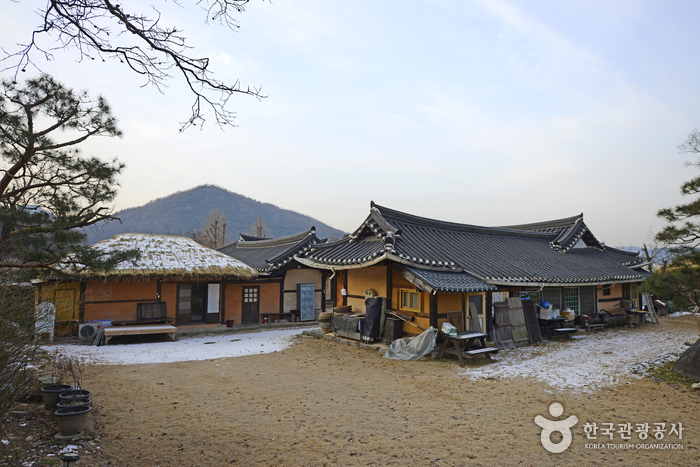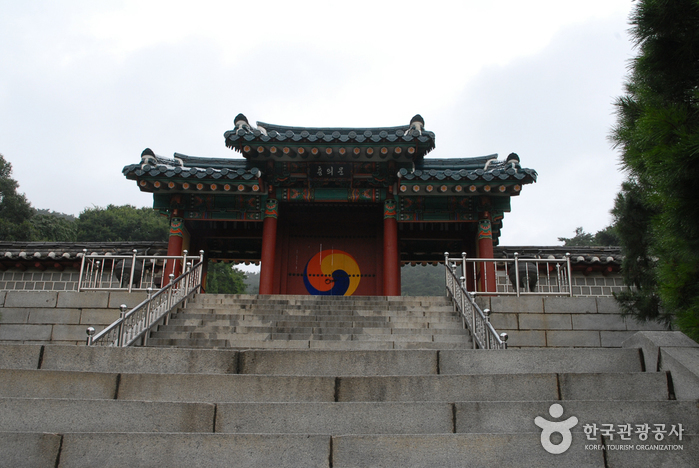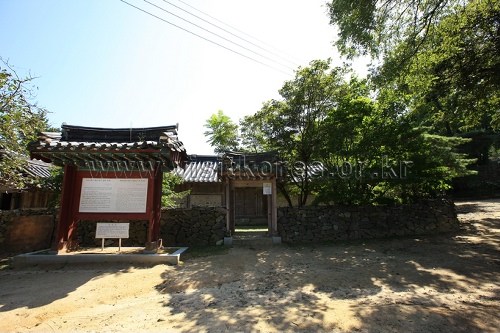Lotte Himart - Asan Terminal Branch [Tax Refund Shop] (롯데하이마트 아산터미널점)
3.3 Km 0 2024-04-18
225, Beonyeong-ro, Asan-si, Chungcheongnam-do
-
Lotte Mart - Asan Terminal Branch [Tax Refund Shop] (롯데마트 아산터미널점)
3.3 Km 0 2024-04-16
225, Beonyeong-ro, Asan-si, Chungcheongnam-do
-
Himart - Asan Terminal Branch [Tax Refund Shop] (하이마트 아산터미널점)
3.4 Km 0 2024-04-18
5, Mojong-ro, Asan-si, Chungcheongnam-do
-
E-Mart - Asan Branch [Tax Refund Shop] (이마트 아산)
3.6 Km 0 2024-04-22
1678, Oncheon-daero, Asan-si, Chungcheongnam-do
-
Mokhwa Banjeom (Asan) [목화반점(아산)]
3.6 Km 28231 2024-02-21
7-3, Onju-gil 26beon-gil, Asan-si, Chungcheongnam-do
Mokhwa Banjeom is a Chinese restaurant in Asan enjoying a loyal following. Its expertise is evident in the popularity of customers’ favorites such as tangsuyuk (deep-fried pork with sweet and sour sauce), jjajangmyeon (black bean sauce noodles), and jjamppong (spicy seafood noodle soup). Many people visit this restaurant, so waiting is the norm. Mokhwa Banjeom’s signature dish is tangsuyuk (deep-fried pork with sweet and sour sauce), made with egg batter for a rich, crispy, yet fluffy texture.
Uniqlo - Asan Punggi Branch [Tax Refund Shop] (유니클로 아산풍기)
3.8 Km 0 2024-04-18
1692, Oncheon-daero, Asan-si, Chungcheongnam-do
-
Oeam Folk Village (외암민속마을)
5.6 Km 30287 2024-03-15
13-2 Oeamminsok-gil 9beon-gil, Songak-myeon, Asan-si, Chungcheongnam-do
+82-41-540-2110
Oeam Folk Village, located in Asan, boasts a history spanning over 500 years. This agricultural village has preserved its ancient houses and cultural heritage remarkably well. At the entrance, visitors are greeted by a recreation of a traditional market. The village offers Hanokstay programs, allowing guests to stay in traditional Korean houses, and provides interactive experiences that recreate traditional Korean agricultural practices and crafts.
Pungduck House
5.9 Km 1100 2021-04-09
20-17, Oeamminsok-gil, Songak-myeon, Asan-si, Chungcheongnam-do
+82-41-541-0023
Pungduck Old House is located in Oeam Folk Village. The name “Pungduck (or Pungdeok)” comes from the penname of Lee Taekju, the seventh-generation descendant of historical figure Lee Sajong who earned the penname “Pungdeok” while serving as the Governor of Pungdeok-gun, Gwanghae-do. The old house is “ㅁ”-shaped, with “ㄴ”-shaped building and “ㄱ”-shaped building right over it. Behind the main building is a knoll that serves as a wall of the house. Detached buildings called “sarangchae” and “byeolchae” are used as a guesthouse where guests can experience an old traditional Korean house. The "sarangchae" with area of 40㎡ has two rooms, one living room, a kitchen, and a bathroom. There is a toenmaru (narrow wooden porch running along the outside of a room). The “byeolchae” has a large spacious room, a kitchen, and a bathroom. There is a low wooden bench called “pyeongsang” in front of the “sarangchae” and “byeolchae.” Pungduck Old House is also well-known for its traditional red chili paste, so it offers a Traditional Red Chili Paste Class where participants can buy or make their own red chili paste, soybean paste, and grain syrup using traditional recipes. There is a fee for participating in the class, so make a reservation when booking.
Hyeonchungsa Shrine (현충사)
5.9 Km 27221 2020-04-03
126, Hyeonchungsa-gil, Asan-si, Chungcheongnam-do
+82-41-539-4600
Hyeonchungsa Shrine, located in Asan-si, is the shrine of General Lee Sun-Shin (1545-1598). It was built in 1706, and named Hyeonchungsa Shrine the following year. In 1932 during the Japanese occupation, a treasure preservation committee was formed to protect the shrine. Afterward, the shrine was rebuilt by the government, its area greatly enlarged, and was further developed into a sacred place.
The shrine contains Sipkyeongdo, a pictorial biography of general Lee Sun-Shin’s portrait and his life story. Nanjung Diary, designated National Treasure No. 76, his Long Sword, Treasure No. 326, and other treasures are displayed within the shrine as well, together with the old house he lived in, the arrow shooting range, and Geobuksun (turtle ship). When you enter the of Hyeonchungsa Shrine, Chungmu gate, you will see another gate called Hongsal Gate. Go past Hongsal Gate and you can see Lee Sun-Shin’s portrait, which was made with Korean Cheonggiwa tiles and iron-reinforced concrete. Inside the Gotaek Building is the Chungmujeong House, where Lee Sun-Shin spent his life until he was a young man. The newly added pond, Yeonji Pond, in Hyeonchungsa Shrine is also worth exploring.
Asan Maengssi Haengdan House - Maeng Sa-seong House (아산 맹씨행단(맹사성 고택)
6.2 Km 10451 2020-05-07
23-4, Haengdan-gil, Asan-si, Chungcheongnam-do
+82-41-536-8773
Maeng Sa-seong is a major figure in Cheonbaek-ri and was a prime minister during the early years of the Joseon dynasty. His house is the oldest private residence in Korea, and was originally General Choi Yeong’s home, before he turned it over to his grand son-in-law, Maeng Sa-seong. The simple residence houses two 600-year-old gingko trees in the yard. Therefore it has been named ‘Haengdan’, meaning that Confucius taught on top of the gingko tree symbolizing a place of learning. For that reason it is inferred that Maeng Sa-seong intentionally planted gingko trees in the yard and taught junior scholars. The two gingko trees provide a cool shade and give out five sacks of gingko nuts each year.
![Lotte Himart - Asan Terminal Branch [Tax Refund Shop] (롯데하이마트 아산터미널점)](http://tong.visitkorea.or.kr/cms/resource/98/2883298_image2_1.jpg)

![Himart - Asan Terminal Branch [Tax Refund Shop] (하이마트 아산터미널점)](http://tong.visitkorea.or.kr/cms/resource/02/2883302_image2_1.jpg)
![E-Mart - Asan Branch [Tax Refund Shop] (이마트 아산)](http://tong.visitkorea.or.kr/cms/resource/05/2883305_image2_1.jpg)
![Mokhwa Banjeom (Asan) [목화반점(아산)]](http://tong.visitkorea.or.kr/cms/resource/99/3050399_image2_1.jpg)
![Uniqlo - Asan Punggi Branch [Tax Refund Shop] (유니클로 아산풍기)](http://tong.visitkorea.or.kr/cms/resource/08/2883308_image2_1.jpg)



 English
English
 한국어
한국어 日本語
日本語 中文(简体)
中文(简体) Deutsch
Deutsch Français
Français Español
Español Русский
Русский